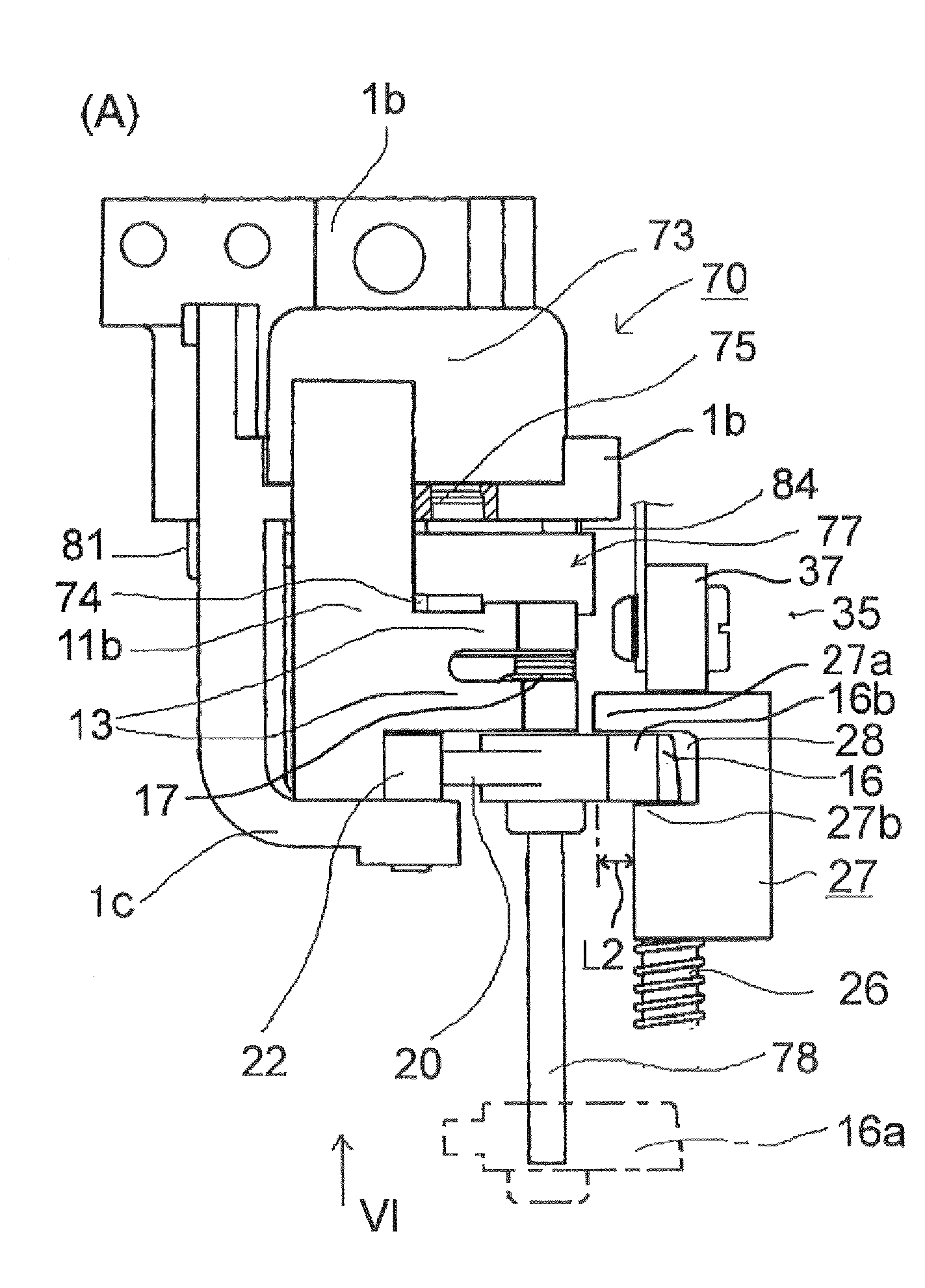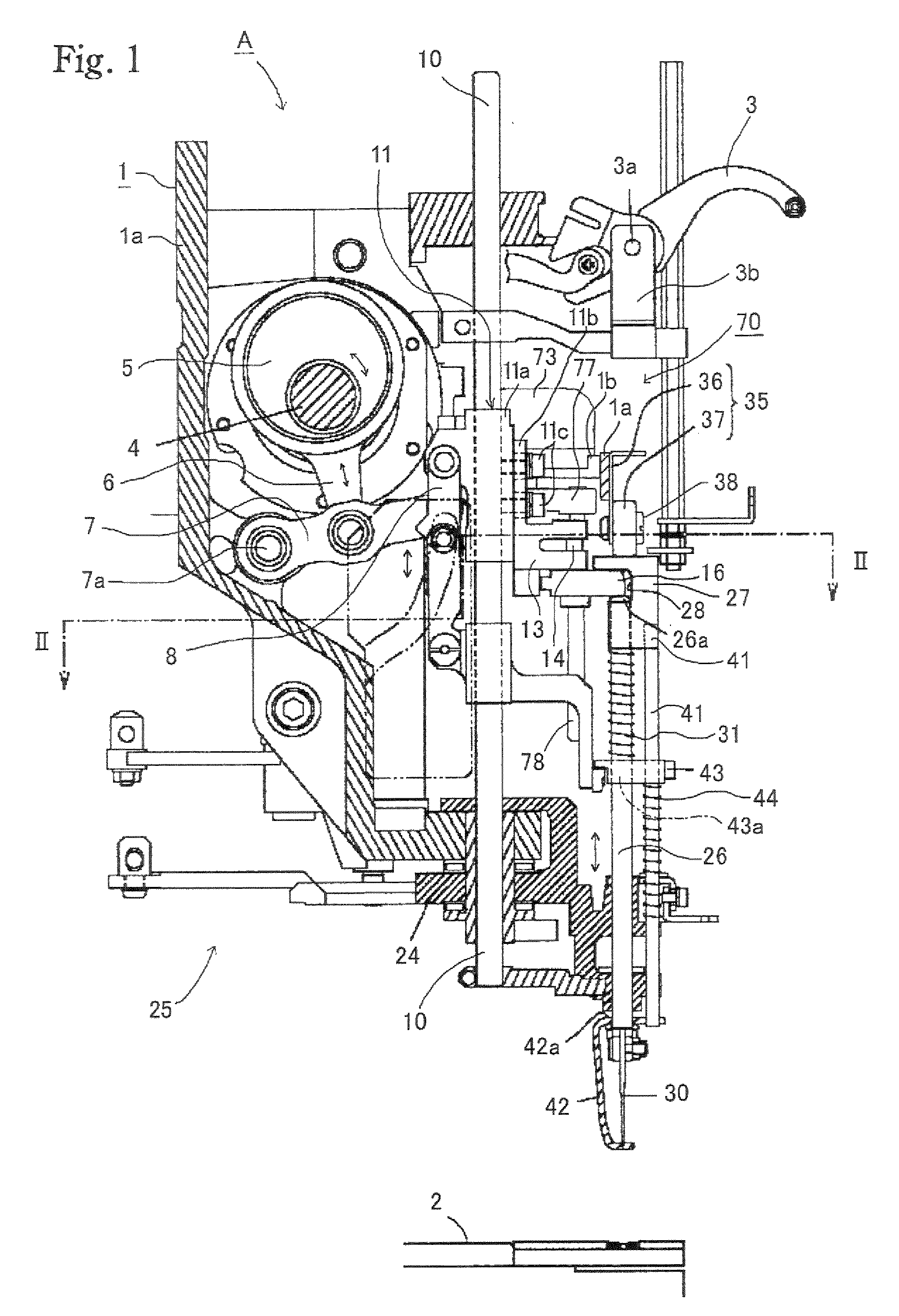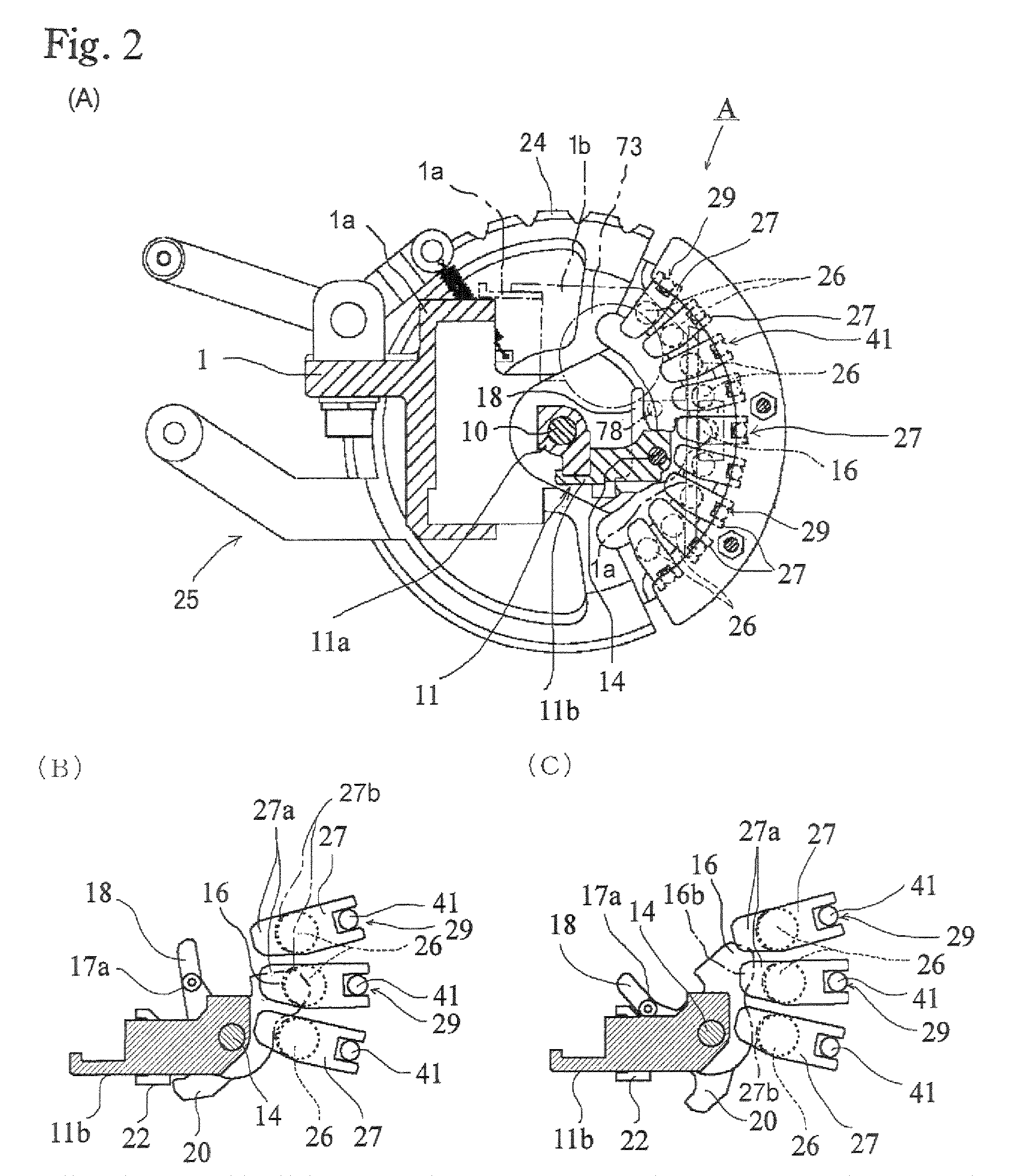Sewing machine
a sewing machine and latching element technology, applied in the field of sewing machines, can solve the problems of increasing the solenoid, increasing the cost, and reducing the disengagement speed of the latching element from the engaging member of the needle bar
- Summary
- Abstract
- Description
- Claims
- Application Information
AI Technical Summary
Benefits of technology
Problems solved by technology
Method used
Image
Examples
Embodiment Construction
[0051]Hereunder, an embodiment of the present invention will be described referring to the drawings. In FIGS. 1 and 2A to 2C, the structure involving a frame 1, a thread take-up 3, components 24 to 31 associated with a needle bar, components 35 to 38 associated with a needle bar stopper, components 41 to 44 associated with a presser foot, components 5 to 22 associated with a carriage, components associated with a skipping mechanism 70 (except those related to the description of novel technical matters (such as structure, combination or function of the components) introduced in the following description given regarding such components as a engaging device 27 of the needle bar, a second latching portion 16b of the carriage, and an operating member 78) represents a structure made up so as to attain similar movement and function to those of a sewing machine constituted of the components of a conventionally known model, for example the sewing machine shown in FIG. 1 of the patented docum...
PUM
 Login to View More
Login to View More Abstract
Description
Claims
Application Information
 Login to View More
Login to View More - R&D
- Intellectual Property
- Life Sciences
- Materials
- Tech Scout
- Unparalleled Data Quality
- Higher Quality Content
- 60% Fewer Hallucinations
Browse by: Latest US Patents, China's latest patents, Technical Efficacy Thesaurus, Application Domain, Technology Topic, Popular Technical Reports.
© 2025 PatSnap. All rights reserved.Legal|Privacy policy|Modern Slavery Act Transparency Statement|Sitemap|About US| Contact US: help@patsnap.com



